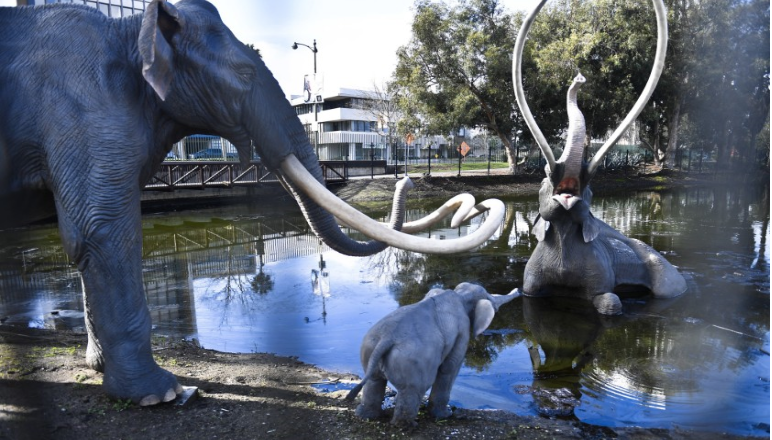
OPINION----My favorite photograph of the La Brea Tar Pits was taken in 1910, before it was in any way recognizable as what it would become. In the foreground, not far from what is now Wilshire Boulevard, a cluster of men stand in front of a small tar pond. Behind them, oil derricks rise against the backdrop of the Hollywood Hills. (Photo above: The fiberglass mammoth trio at the corner of Wilshire and Curson is entertaining fakery, reconstituted history and a science lesson all rolled into one. Stuart Palley / For The Times )
There is no George C. Page Museum in this image, no LACMA, no city infrastructure of any kind. Even the tar pits, at least in shapes we might recognize, are nowhere to be seen. The photograph is a reminder of how conditional Los Angeles is, how malleable and in flux.
I’ve spent a fair amount of time thinking about this image in the five weeks since the unveiling of three proposals for renovating the tar pits and the Page Museum. Much of the response to the plans has revolved — anxiously — around the family of fiberglass mammoths that have played out a kitschy life-and-death drama for more than half a century along the shore of the Lake Pit at the corner of Wilshire and Curson. One redesign would relocate them indoors.
I share the consternation of many Angelenos; I don’t want the mammoths moved. I’ll admit I don’t like change in general, but I think the desire to keep the mammoths where they are points to something deeper too. The trio is a perfect example of Los Angeles’ conflicted identity: It both effaces and embraces history.
Early paleontological excavations at Rancho La Brea … (Read the rest.)
-cw





